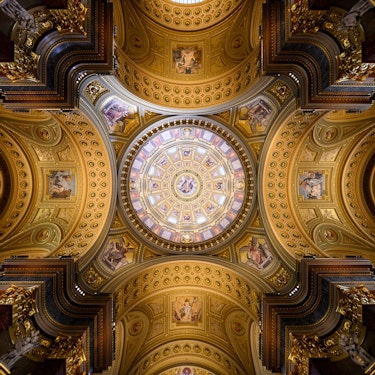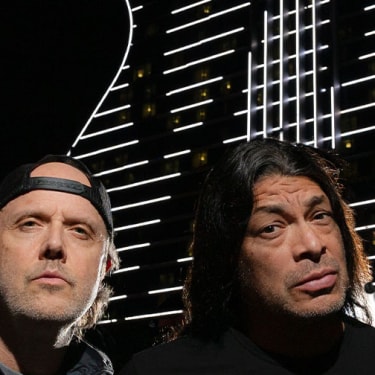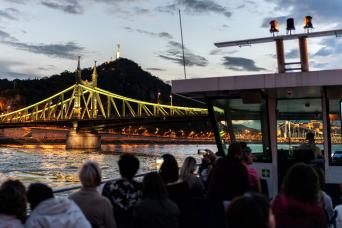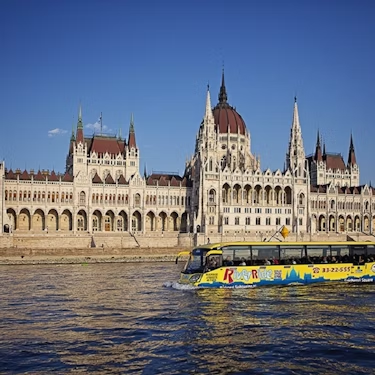More about: 10 Things to Do in Budapest in Winter
Winters in Budapest are cold, there's no denying it. However, there are also many things to do indoors, such as a tour of the opera, visiting the Christmas markets and checking out the ruin bars, which are at their liveliest at this time of year. And of course, don't forget to warm up and heal your body in one of Budapest's spas during this season.
1. Immerse yourself in one of Budapest's thermal baths
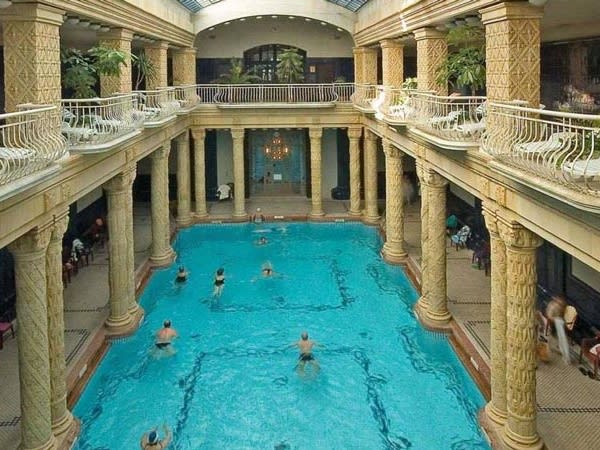
One of the most appealing activities in Budapest in winter is to immerse yourself in a warm thermal bath. Because they are fed by natural springs rich in calcium, magnesium and fluorine, these baths have great healing and cleansing properties. Ticket prices vary between £12 and £22, depending on the baths and the package. The baths are open from 9 a.m. to 7 p.m. every day of the week.
Among the best spas in Budapest is the Széchenyi, which has three heated outdoor pools. Other popular thermal baths to visit in Budapest are the Gellert, Kiraly and Lukacs Baths. Each of these has different features, some with pools of varying temperatures, saunas, massages and spa treatments.
2. Take refuge in the ruin bars
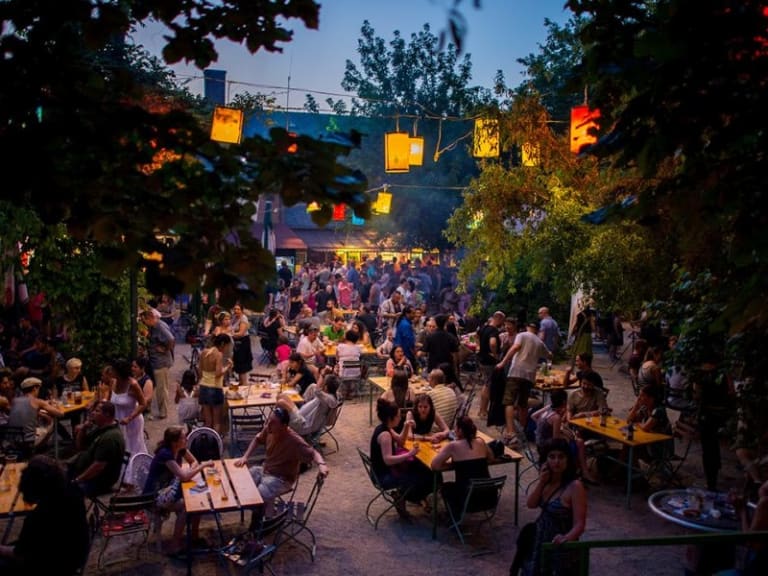
As a tip for your visit to the city, I recommend taking a tour of these bars in December and January. At this time of year, these bars, in addition to their striking appearance and remarkable features, are a refuge from the cold and wind. Being able to enjoy a wide variety of drinks and seasonal delicacies is something to be grateful for.
- Szimpla Kert: this was the first ruin bar to open in the city and is one of the places I most recommend visiting on your tour of Budapest's Jewish quarter.
- Ankert: if you prefer nightlife in the city, this bar is located in District 6 and offers some of the best nightlife experiences with music and entertainment.
There are more than a dozen ruin bars in Budapest and they often offer special tours to let tourists experience the city while sampling some of its local wines and "unicum", a herbal liqueur unique to Budapest.
3. Go ice skating at City Park
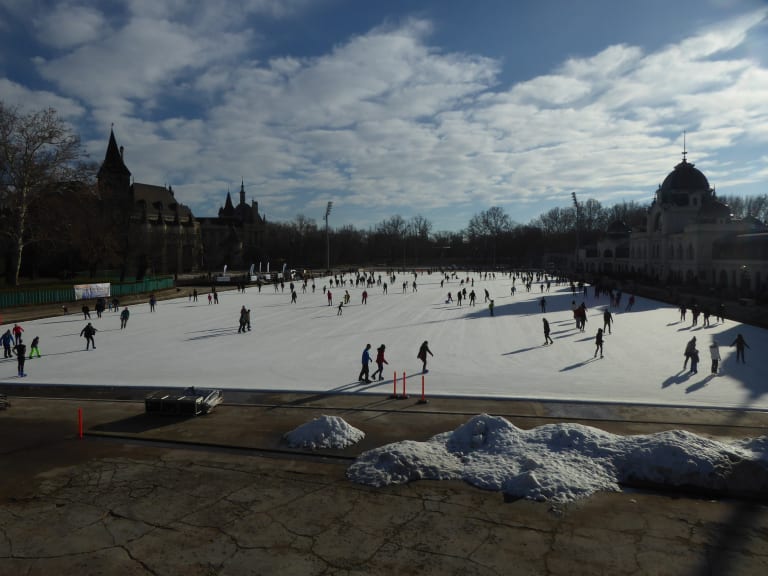
Budapest's City Park ice rink is by far the most famous skating destination in the region, if not in Europe. Located directly opposite Vajdahunyad Castle on the edge of the city park, skaters flock to the rink every winter between late November and mid-February.
Hours are from 9 a.m. to 1 p.m. and then from 5 p.m. to 9 p.m. Admission fees are as follows:
- Adults: 5 euros.
- Families: £11 (2 adults and one child).
- Children, students and pensioners: almost £2.
First opened in 1870, this ice rink is one of the oldest and largest in Europe. Of course, if you go to Budapest in summer, what you'll see is a large lake.
4. Enjoy the light show at the Basilica
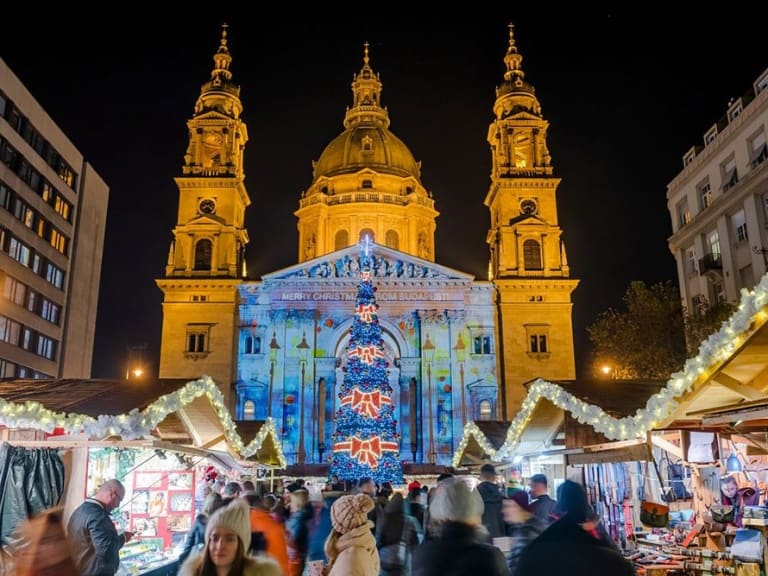
St. Stephen's Basilica is a beautiful building, but what is even more pleasing to the eye is the wonderful light show during the winter, especially if you visit the city in December and January. The light show takes place every half hour between 4:30 p.m. and 10 p.m.
For the latest information, I recommend visiting this website.
The winter season offers the best light show experience, where religious stories and fables are recited with coloured lights and sound. The dazzling 3D animations projected onto the front of the building create an incredible optical effect.
5. Discover Andrassy Avenue and Fashion Street
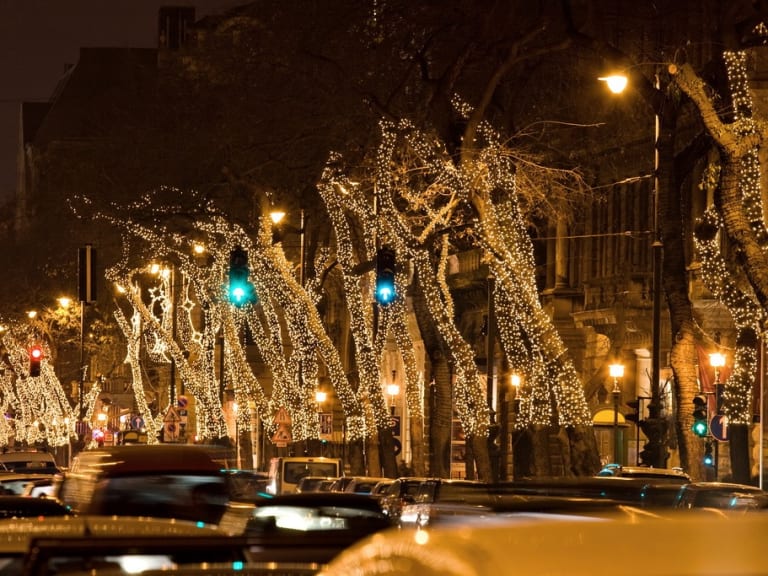
Shopping in Budapest during the winter is a magical experience. Not only can you browse the best boutiques and enjoy the best discounts of the year, but you can also soak up the Christmas spirit on the beautifully decorated boulevards. Andrassy Avenue and Fashion Street are two of the most popular shopping and tourist destinations at this time of year. Shops here are usually open from 10 a.m. to 9 p.m. during the winter months.
Stretching between Heroes' Square and Elizabeth Square, Andrassy Avenue is home to Gucci, Ralph Lauren, Louis Vuitton, Burberry and Rolex, to name a few. In addition, the avenue is covered with thousands of lights and Christmas trees.
Meanwhile, on Fashion Street, there is a large selection of boutiques lining the catwalk leading to Vörösmarty Square. The bustling street has become a major tourist attraction thanks to its displays and installations that help make the winter season even more special.
6. Try traditional Hungarian winter food at the Great Central Market
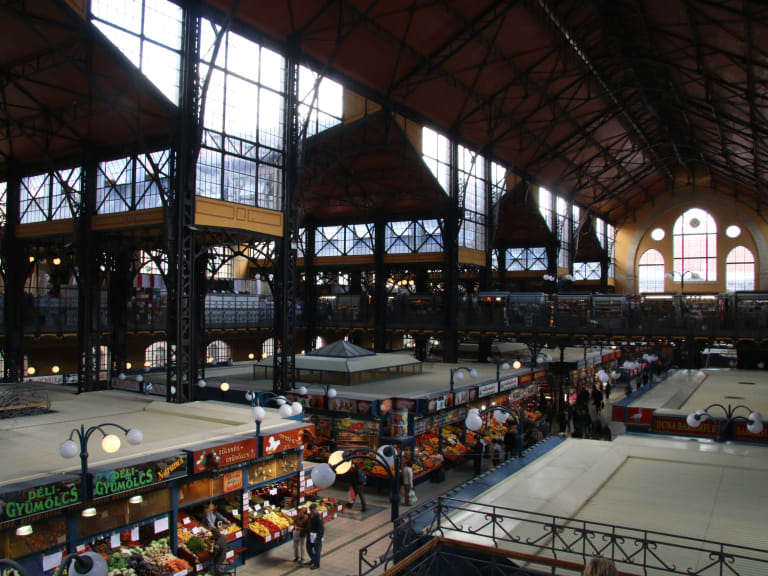
Nagy Vásárcsarnok (the Great Market) is one of the ideal places for a food tour of Budapest and a must-see if you are in the city during the winter. On the second floor, there are a few standing counters serving traditional Hungarian dishes and wines of the season . It's hard to resist the smell of home-cooked food and freshly baked strudels! I recommend ordering the winter specials if you want to try authentic traditional Hungarian cuisine.
The Great Market Hall is also a place to warm up, as it is always heated. And don't miss the famous lángos, fried right before your eyes, although it's best to eat them when you visit Budapest in summer.
The market is open from 6 a.m. to 6 p.m. Monday to Friday and from 6 a.m. to 3 p.m. on Saturdays. The market is closed on Sundays.
7. Enjoy a winter tram ride
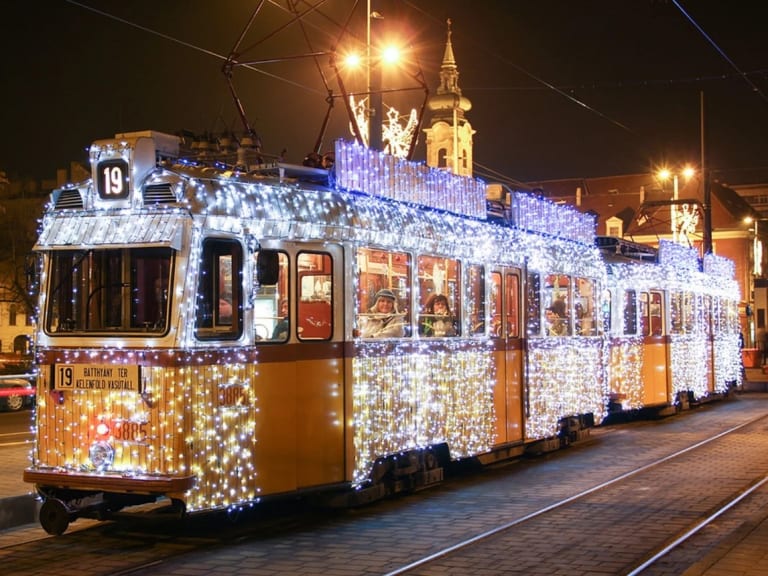
During winter in Budapest, mainly December and January, there are special trams covered with fairy lights that run through the city's most touristy areas and attract attention with their striking exterior design. They are also a perfect way to get around on cold nights. These trams are known as Fényvillamos and, as well as being a means of transport, they are an attraction in their own right.
If you are interested in taking a tram to visit the city in style, you can find these illuminated trams along the popular routes in Budapest. They start operating after 5pm every evening. A tram ticket costs around 380 HUF (1 euro).
Remember that this line is out of service on Christmas Eve and New Year's Eve.
8. Don't miss the Hungarian State Opera House
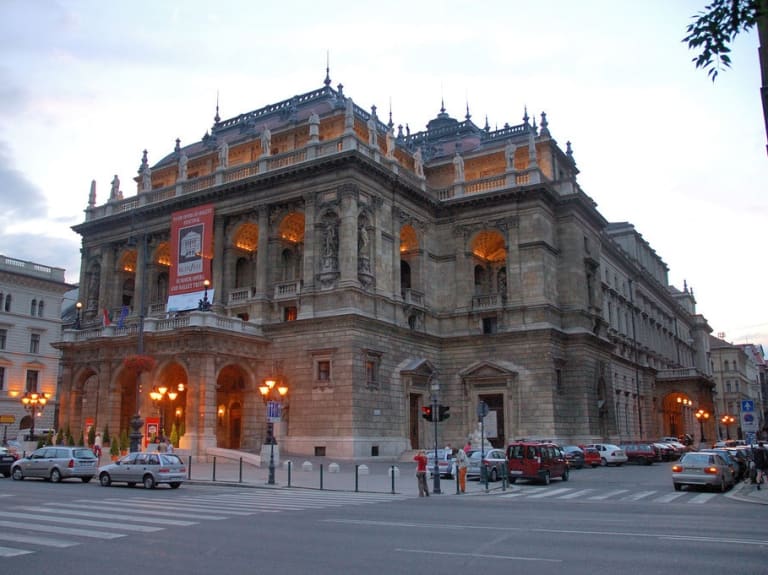
The Hungarian State Opera House opens its doors in winter so you can enjoy a warm evening filled with music and a great atmosphere. What better way to combat the dreary cold days than with rhythm and expressive art? Not only can you enjoy the music, but you can also take a tour of the building, as it is a historic site with lots to see.
Designed by renowned architect Miklós Ybl, the Hungarian State Opera House, completed in 1884, remains exactly the same as when it was built over 130 years ago. The impressive building is regularly used in blockbuster films and has become an iconic national treasure. Ballet and opera fans are drawn to this venue because of the high-quality performances of shows including "The Nutcracker", "La Boheme", "Billy Elliot", "The Magic Flute" and "Tosca".
And if you are passionate about classical music and want more, we also recommend attending the organ concert at St. Stephen's Basilica to enjoy pieces by composers such as Vivaldi and Beethoven.
9. Immerse yourself in the magic of the Christmas markets
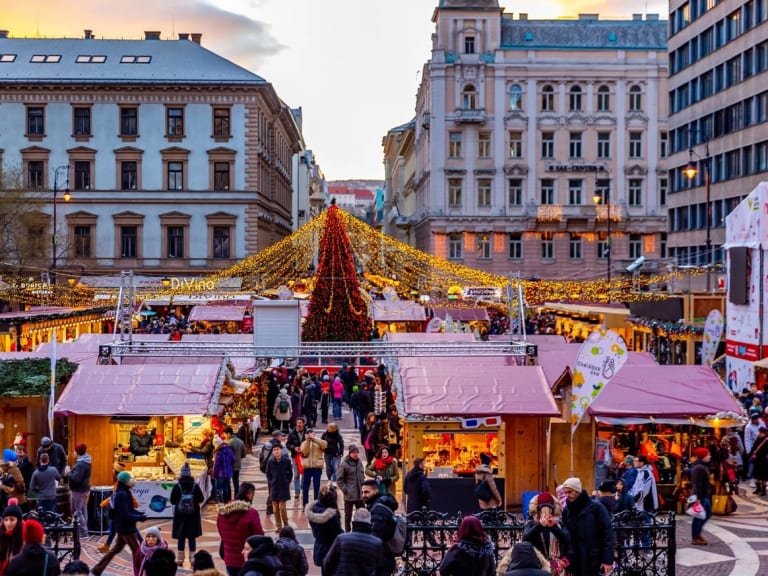
Although this is a Christmas event in Budapest, it is still a tourist attraction if you visit the city in winter. Mulled wine, Christmas strudel, traditional dishes and handicrafts line the stalls of the Christmas markets in Vörösmarty Square and St. Stephen's Basilica.
Taking place from November to early January each season and open from 10 a.m. to 10 p.m., the markets welcome large numbers of visitors from all over the world and offer an authentic Hungarian Christmas experience you will never forget.
The market in Vörösmarty Square is one of the most popular in Central Europe, as well as one of the oldest in Hungary. It is famous for its traditional Hungarian foods, including chimney cake, local sausages and a wide variety of treats to choose from at more than 120 stalls.
Meanwhile, the Christmas market at St. Stephen's Basilica is located in front of the spectacular basilica building, with more than 160 stalls filled with cakes, sweets, handicrafts, mulled wine and traditional Christmas gifts. Admission to both markets is free.
10. Don't forget the Budapest Carnival!
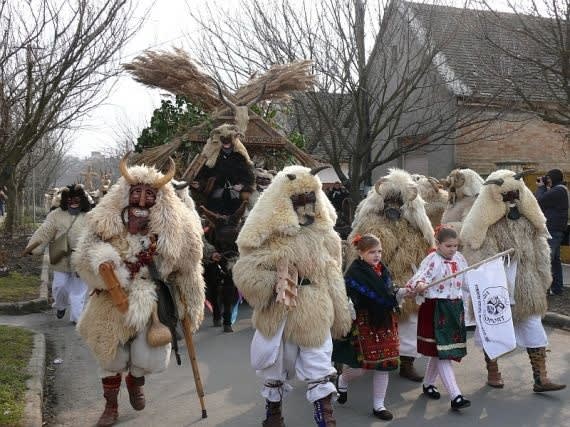
In winter, Budapest also celebrates its carnival (known as "Farsang" in Hungarian). This event always falls between Epiphany and Ash Wednesday. So, if your main tourist plan is to see Farsang, you should visit the city in February.
The Budapest Carnival season is a festival of life, colour and cheerfulness to be enjoyed by everyone, regardless of religious beliefs. For many, it has become more than just a social event, with traditional events such as Busójárás expressing the country's roots and culture as it bids farewell to winter and welcomes spring with enthusiasm.
You can also check out the "Busó" parade in Mohács without leaving Budapest. In the "Busó", men dress up in scary costumes wearing wooden masks and horns and chase women.
Budapest's climate in winter
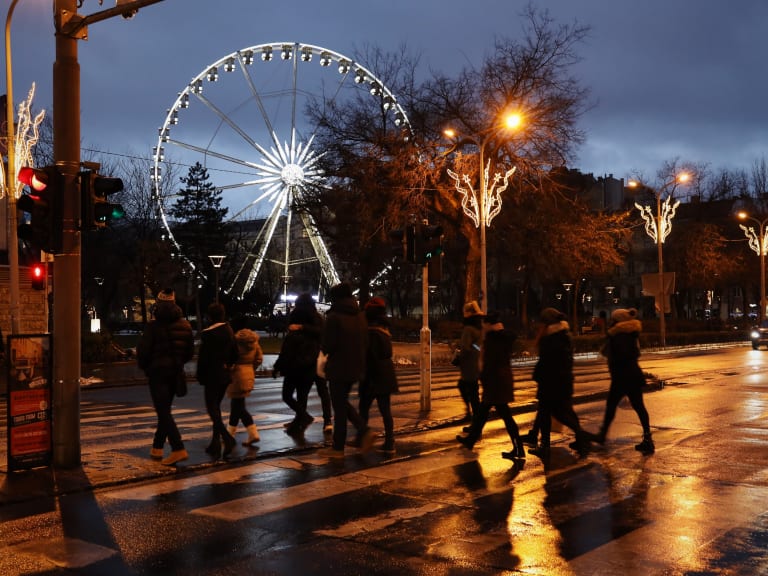
Winter in Budapest is generally considered to be from December to February, with a touch of winter in November and March. The average temperature is between 1ºC and 4ºC. However, if you visit the city in January, don't be surprised if temperatures drop to -7ºC.
Like most places in Europe that experience a winter season, Budapest tends to be cold and grey in winter, with few sunny days.
From mid-December to mid-February, it is common to see snow in the city.
Essentials to pack for your trip to Budapest in winter
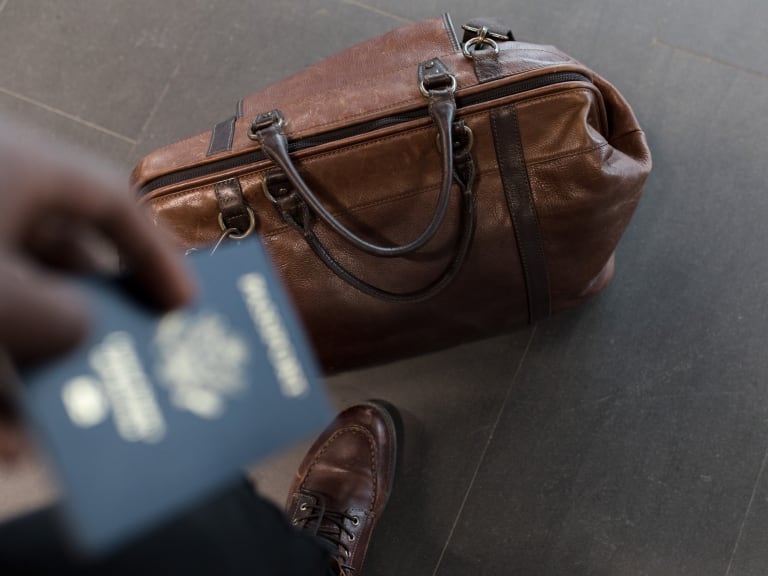
First, consider a heavy coat with a hood or a down jacket. You will also need wool jumpers, long-sleeved shirts or turtlenecks, a good pair of gloves and a knitted or warm fur hat.
As Hungarians are used to the cold, also consider leaving room in your suitcase for some fashionable Budapest clothing. Remember that there are sales in many shops in winter, especially if you visit Budapest at Christmas.
How to get around Budapest in winter
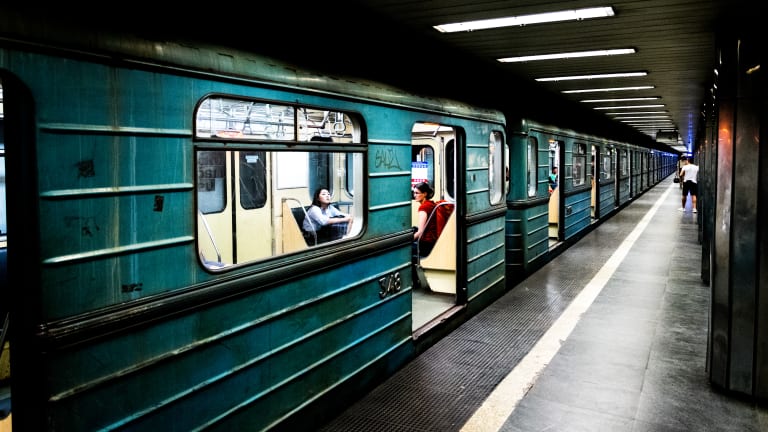
Budapest has a varied and efficient public transport system. During the winter, your best option is the metro: it has four lines and serves almost all the main tourist attractions.
The only exception is the Castle District, home to Buda Castle and Matthias Church, but this is also easily accessible by bus or tram.
Tram 2 is one of the best tourist lines, so be sure to use it! It will take you on a ride along the river as if you were on an excursion along the Danube Bend. It also offers the best views of Gellért Hill, the castle area and the Parliament.




